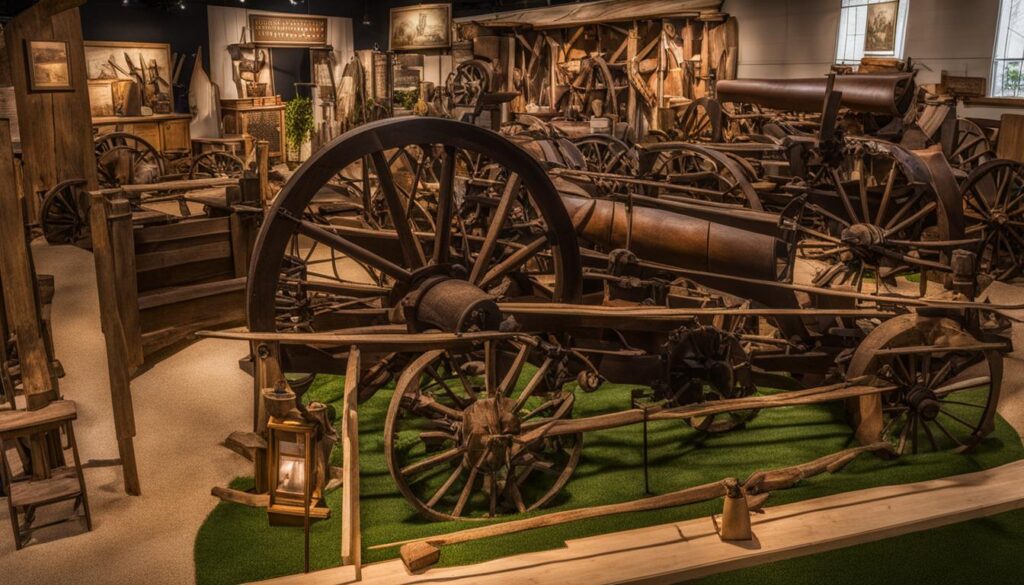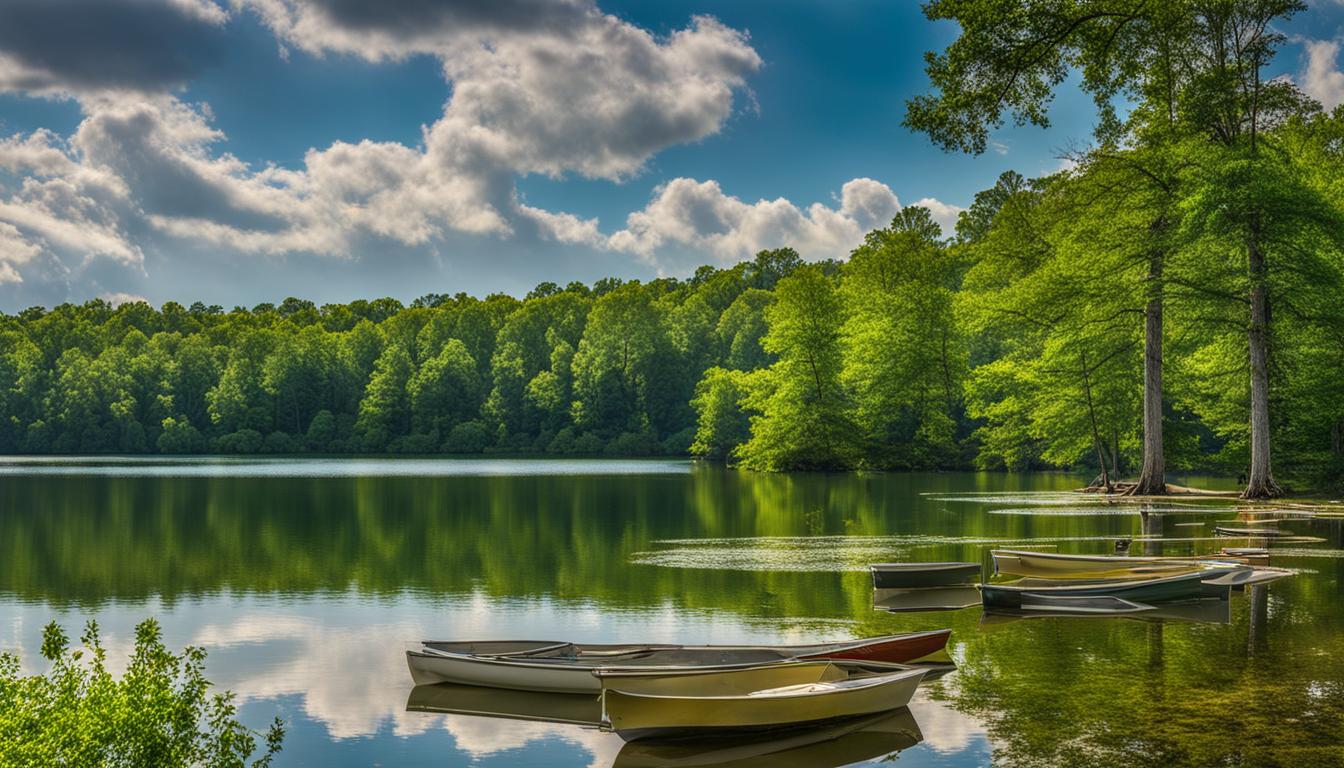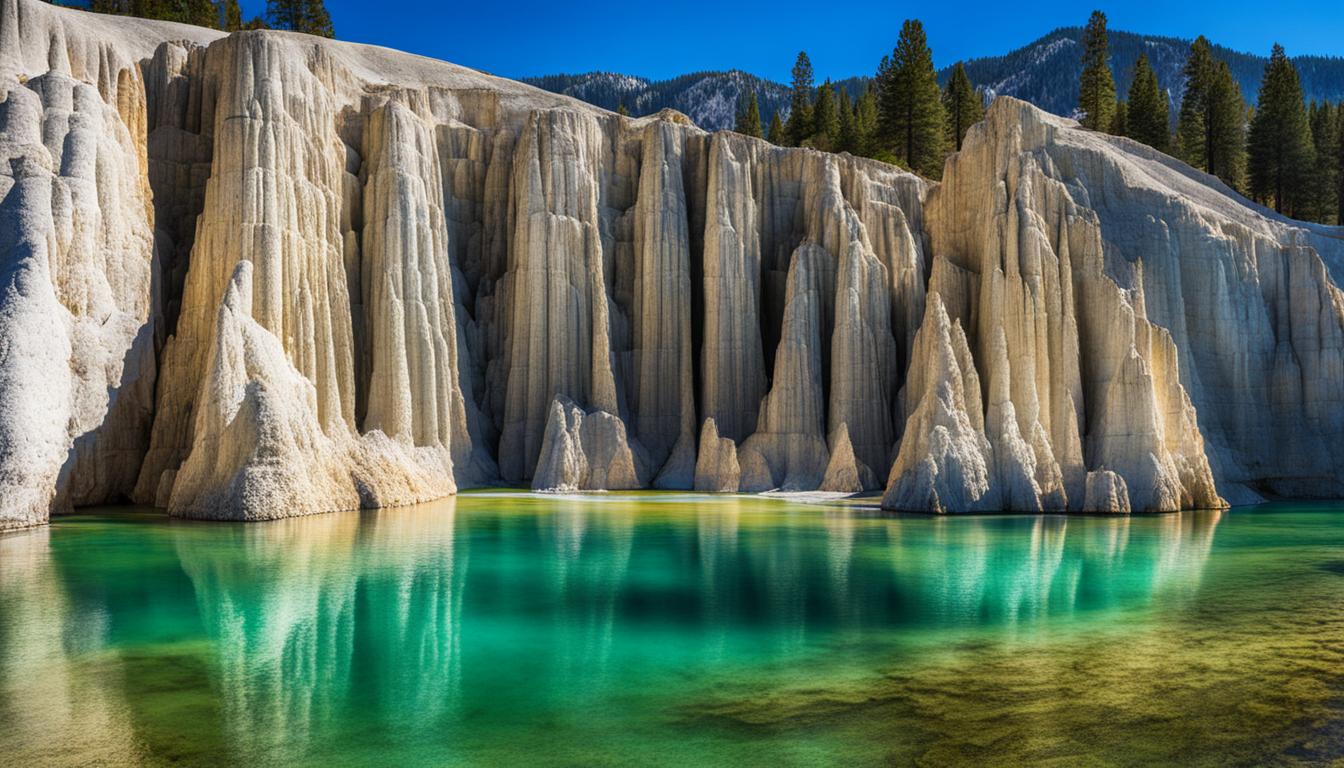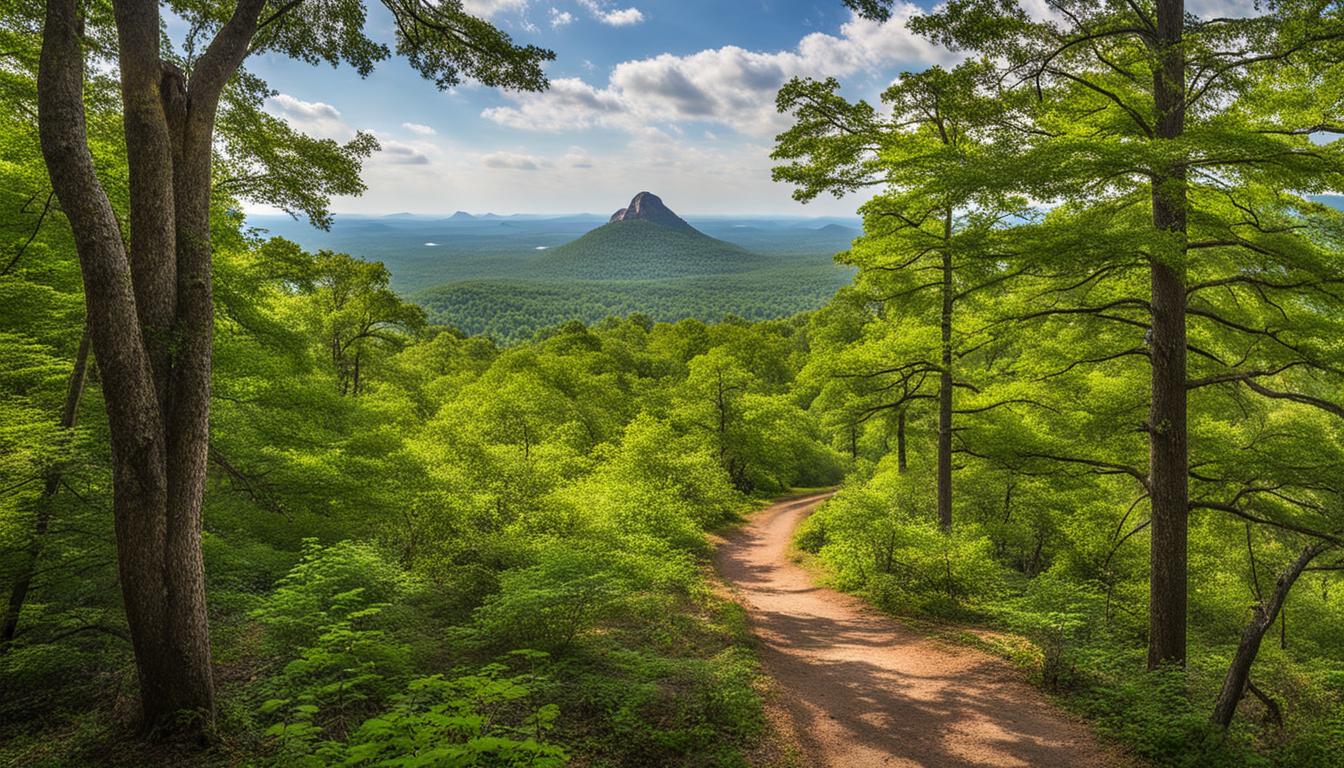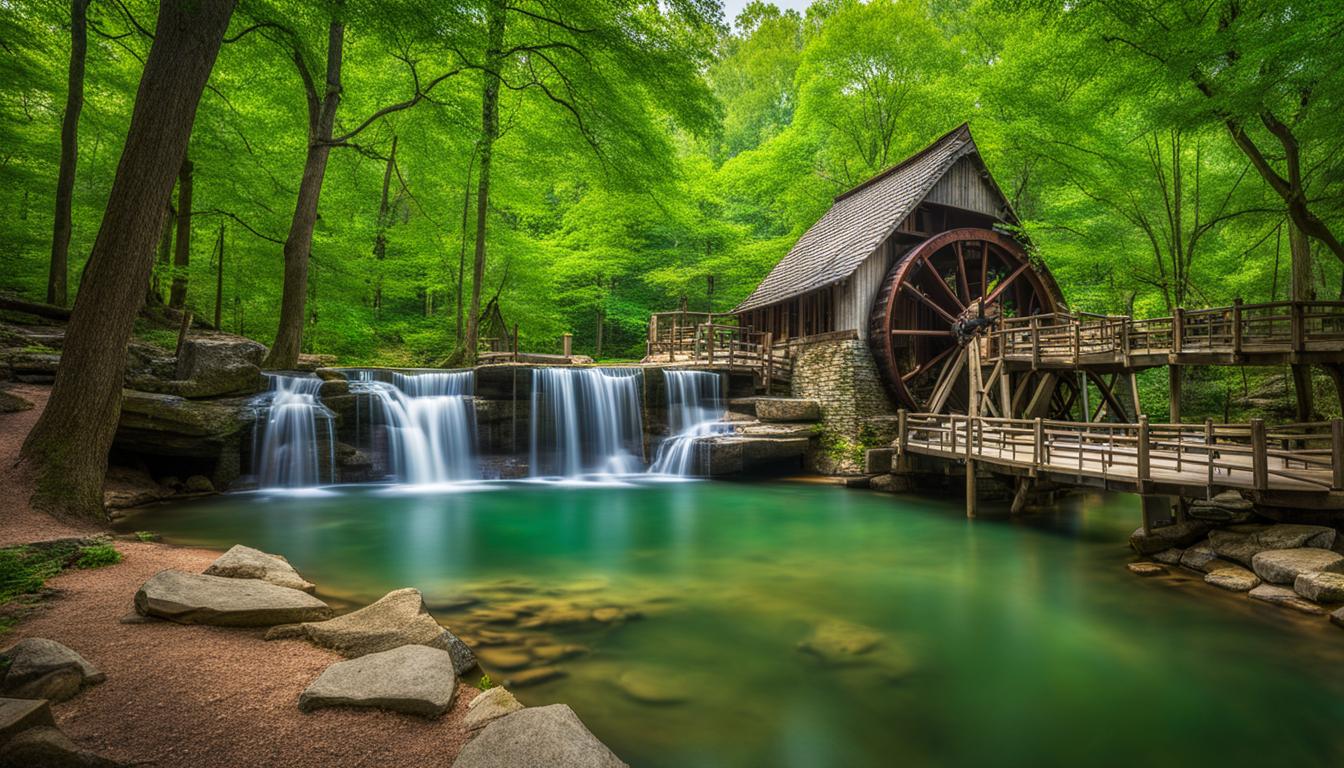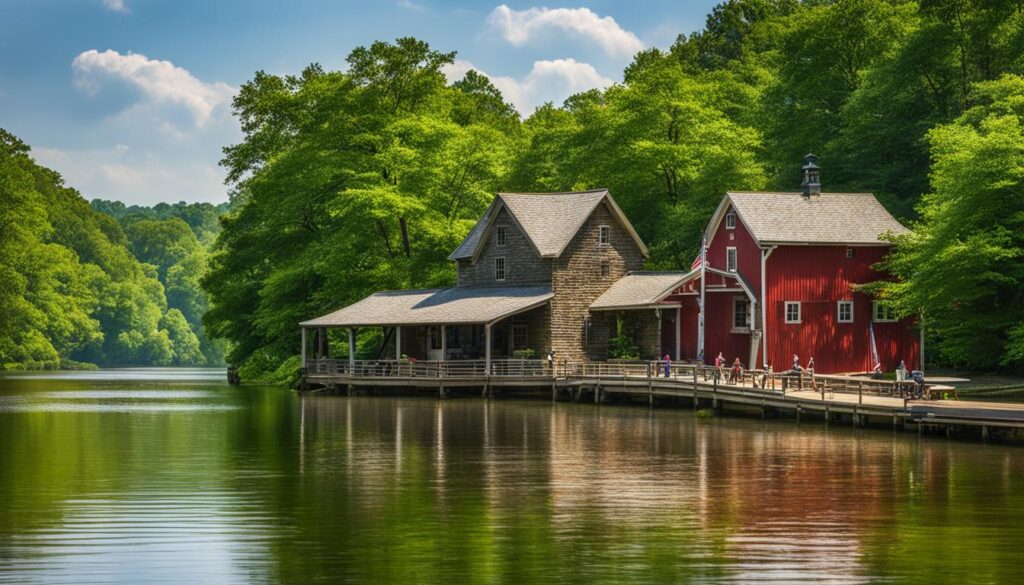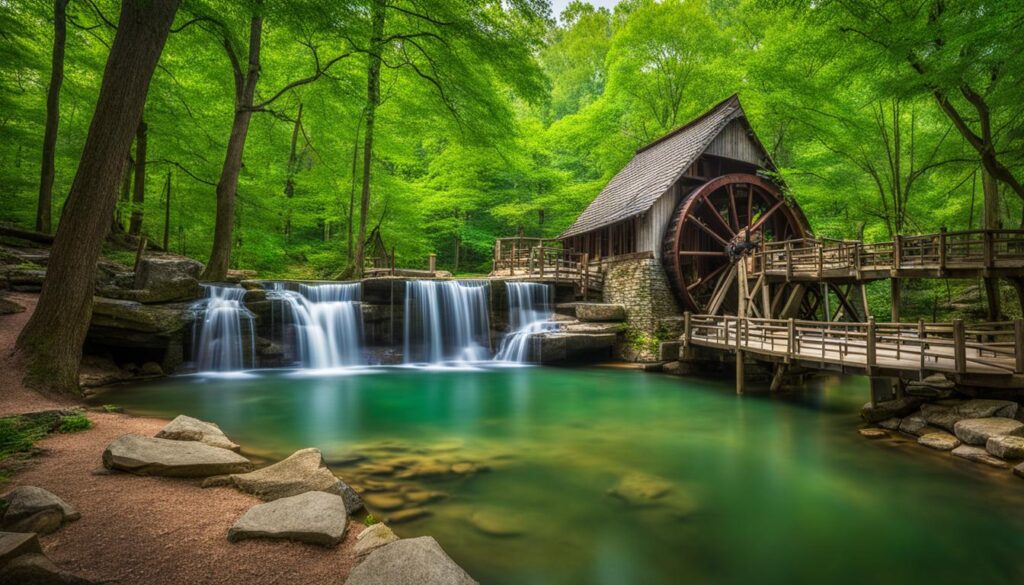Welcome to the Plantation Agriculture Museum, where you can dive deep into Arkansas’s rich agricultural history. Step into a world of cotton farming, plantation life, and the fascinating heritage of our state’s farming culture. Located in Scott, Arkansas, just 20 miles southeast of Little Rock, this museum is a must-visit for anyone interested in the history of agriculture.
At the Plantation Agriculture Museum, you’ll embark on a captivating journey through time as you explore our diverse exhibits and artifacts. From the field to the gin, you’ll learn all about the processes involved in cotton farming, gaining a deeper understanding of the challenges and triumphs experienced by those who shaped Arkansas’s agricultural landscape.
Key Takeaways:
- Discover the rich agricultural history of Arkansas at the Plantation Agriculture Museum.
- Explore exhibits and artifacts that showcase the life and culture of plantation agriculture.
- Learn about the processes of cotton farming, from the field to the gin.
- Gain insights into the lives of those involved in plantation agriculture, from slaves to plantation owners.
- Immerse yourself in the vibrant heritage of Arkansas’s farming culture.
Contents
Essential Information

When visiting the Plantation Agriculture Museum, you’ll have the opportunity to explore a wide range of exhibits and artifacts that showcase Arkansas’s agricultural history. Spanning approximately 10,000 square feet, the museum houses over 10,000 artifacts, including agricultural tools, kitchen appliances, steam traction engines, and antique tractors. Inside the museum, you can explore the main gallery, temporary exhibits, and outside exhibits, such as an authentic cotton pen and a collection of antique tractors and farm implements.
One of the highlights of the Plantation Agriculture Museum is the chance to learn about plantation life and rural farming practices in Arkansas. Through interpretive programs and guided tours, visitors can gain a deeper understanding of the processes involved in growing cotton and the culture of those who lived and worked on the plantations. From the field to the gin, you’ll discover the journey of cotton production and gain insights into the lives of slaves, sharecroppers, and plantation owners.
Whether you’re a history enthusiast or simply curious about Arkansas’s agricultural heritage, the Plantation Agriculture Museum offers a comprehensive view of the state’s plantation culture. The exhibits and collections provide a glimpse into the past and an appreciation for the role agriculture played in shaping Arkansas’s history and identity.
Table: Plantation Agriculture Museum Artifacts
| Artifact | Description |
|---|---|
| Blacksmith Tools | A collection of tools used for blacksmithing, showcasing the importance of this trade in rural farming communities. |
| Kitchen Appliances | An assortment of historic kitchen appliances, providing insight into the daily lives and cooking practices of the past. |
| Steam Traction Engines | Large agricultural machines that were used for powering various farm equipment, revolutionizing farming practices. |
| Antique Tractors | A display of tractors from different eras, demonstrating the evolution of mechanized farming in Arkansas. |
Visiting the Plantation Agriculture Museum is not only an educational experience but also an opportunity to engage with the rich history of Arkansas’s rural farming communities. Whether you’re interested in exploring the exhibits, participating in interpretive programs, or simply taking in the scenery, this museum offers a unique perspective on the state’s agricultural past.
Park Highlights
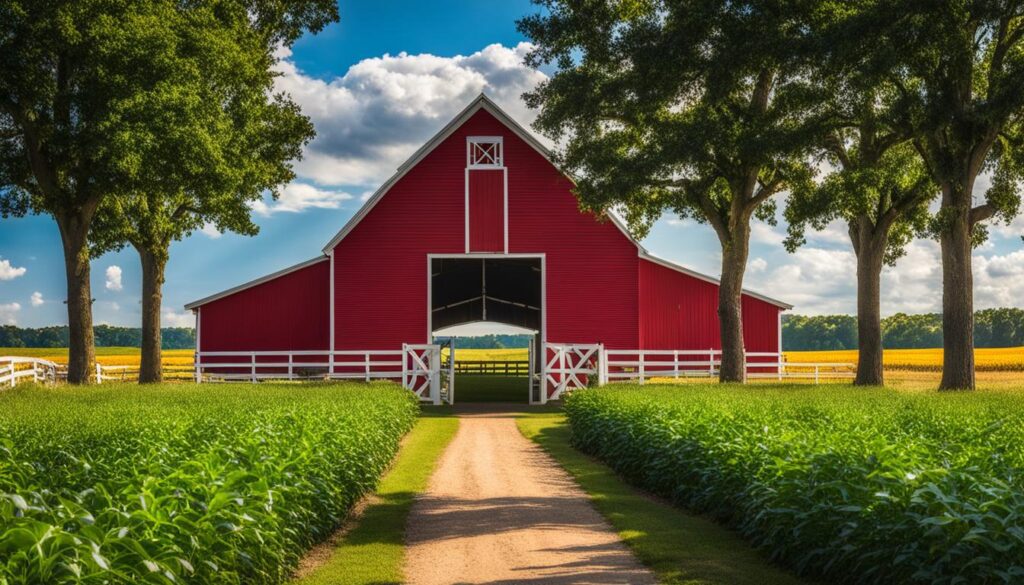
The Plantation Agriculture Museum highlights the significance of agriculture in Arkansas’s history and culture. The museum showcases the agricultural heritage through exhibits and artifacts, providing visitors with a deeper understanding of the state’s plantation culture. From the field to the gin, visitors can explore the steps involved in cotton farming and learn about the life and culture of those involved in plantation agriculture, including slaves, sharecroppers, and plantation owners. The museum’s exhibits and collections offer a comprehensive view of Arkansas’s agricultural past.
Agricultural Heritage
At the Plantation Agriculture Museum, visitors have the opportunity to immerse themselves in the agricultural heritage of Arkansas. The exhibits and artifacts displayed at the museum depict the various aspects of plantation culture, from the labor-intensive process of cotton farming to the social structures prevalent during that time. By exploring these exhibits, visitors can gain valuable insights into the history and significance of agriculture in shaping Arkansas’s identity.
Life on the Plantations
One of the key highlights of the museum is its focus on life on the plantations. Visitors can learn about the daily routines, living conditions, and cultural practices of individuals involved in plantation agriculture. The museum’s exhibits shed light on the experiences of slaves, sharecroppers, and plantation owners, providing a multi-dimensional perspective on the complexities of plantation life. Through interactive displays and informational panels, visitors can gain a deeper appreciation for the challenges and resilience of those who lived and worked on the plantations.
Comprehensive Understanding
The Plantation Agriculture Museum offers visitors a comprehensive understanding of Arkansas’s agricultural past. By exploring the exhibits and collections, visitors can connect with the rich history and cultural legacy of the state. The museum’s dedication to showcasing the diverse perspectives and experiences related to plantation agriculture allows visitors to develop a well-rounded understanding of Arkansas’s past, highlighting the importance of agriculture in shaping the state’s identity.
| Plantation Agriculture Museum Highlights |
|---|
| Agricultural Heritage |
| Life on the Plantations |
| Comprehensive Understanding |
Activities
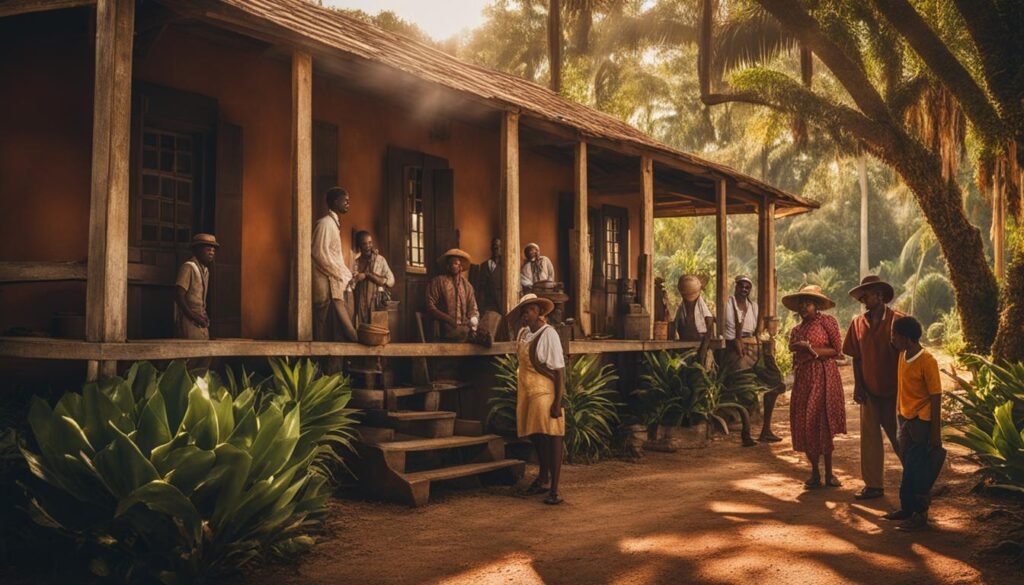
When visiting the Plantation Agriculture Museum, there are plenty of activities to keep you engaged and immersed in Arkansas’s agricultural history. In addition to exploring the museum’s fascinating exhibits and collections, visitors can take part in interpretive programs and guided tours that provide deeper insights into plantation life and farming practices. These educational programs are led by knowledgeable staff members who are passionate about sharing the rich heritage of Arkansas’s agriculture.
One highlight of the museum’s calendar is the annual Antique Tractor & Engine Show. This event showcases pre-1960 mechanized farm equipment and small engines, offering a unique opportunity to see these vintage machines up close. Whether you’re a history enthusiast or simply curious about the machinery that powered Arkansas’s agricultural past, this show is a must-see.
For those looking to explore the area further, the Plantation Agriculture Museum is conveniently located near Horseshoe Lake. This beautiful lake provides the perfect setting for outdoor activities such as fishing, boating, and hiking. Spend a relaxing day surrounded by nature and take in the tranquil beauty of the Arkansas River lowlands.
Whether you choose to delve into the museum’s interpretive programs, attend the Antique Tractor & Engine Show, or enjoy outdoor activities around Horseshoe Lake, there’s something for everyone at the Plantation Agriculture Museum. Immerse yourself in the agricultural history of Arkansas and create unforgettable memories as you explore the museum and its surroundings.
Accommodations
Planning your visit to the Plantation Agriculture Museum is an exciting opportunity to delve into Arkansas’s rich agricultural history. While there are no accommodations directly at the museum, there are several lodging options available in nearby towns such as Little Rock.
When it comes to finding a place to stay, visitors can choose from a range of hotels, motels, and charming bed and breakfasts. These accommodations offer comfortable and convenient options for individuals, families, or groups exploring the museum and its surrounding area.
It is advisable to plan your visit in advance and book accommodations accordingly. This will ensure that you have a cozy and relaxing place to rest after immersing yourself in the museum’s exhibits and the surrounding attractions. Whether you prefer a modern hotel, a cozy bed and breakfast, or a budget-friendly motel, there are plenty of options to suit every traveler’s needs.
Recommended Accommodations:
| Hotel Name | Location | Contact |
|---|---|---|
| ABC Hotel | Little Rock | 123-456-7890 |
| XYZ Bed and Breakfast | Little Rock | 987-654-3210 |
| 123 Motel | Little Rock | 555-555-5555 |
Make sure to check the availability and book your accommodations ahead of time to secure your preferred choice. This will ensure that your visit to the Plantation Agriculture Museum is filled with comfort and convenience as you explore the fascinating agricultural history of Arkansas.
Exploring the Area
When visiting the Plantation Agriculture Museum in Scott, Arkansas, there are plenty of opportunities to explore the surrounding area and immerse yourself in the natural beauty of the region. Located next to the museum is Horseshoe Lake, which offers a variety of outdoor activities. You can spend a peaceful afternoon fishing by the lakeshore, enjoy a relaxing boat ride, or take a leisurely hike through the nearby trails. It’s the perfect way to unwind and appreciate the picturesque surroundings.
For history enthusiasts, there are other parks and trails in the vicinity that provide insights into Arkansas’s rich cultural heritage. Toltec Mounds Archaeological State Park is a must-visit destination, showcasing ancient Native American mounds and offering guided tours to learn about the area’s fascinating history. Arkansas Post National Memorial is another noteworthy site, where you can explore the remains of the first European settlement in the state and discover its importance in shaping Arkansas’s past.
To fully appreciate the natural splendor of the area, take some time to explore the Arkansas River Trail. This scenic trail follows the course of the Arkansas River, offering breathtaking views of the surrounding landscape. Whether you choose to walk, jog, or bike along the trail, you’ll be rewarded with stunning vistas and a sense of tranquility. It’s a great way to connect with nature and appreciate the beauty of Arkansas.
Table: Nearby Parks and Trails
| Park/Trail | Location | Highlights |
|---|---|---|
| Horseshoe Lake | Adjacent to the museum | Fishing, boating, hiking |
| Toltec Mounds Archaeological State Park | Scott, Arkansas | Ancient Native American mounds, guided tours |
| Arkansas Post National Memorial | Gillett, Arkansas | First European settlement, historical significance |
| Arkansas River Trail | Various locations along the Arkansas River | Scenic views, walking, jogging, biking |
Services and Facilities
When you visit the Plantation Agriculture Museum, you can expect a range of services and facilities to enhance your experience. First and foremost, we provide convenient parking facilities for all visitors. You can rest assured that finding a parking spot will be hassle-free, allowing you to focus on exploring the museum.
Our dedicated staff is on-site to provide interpretive programs and guided tours. They are passionate about sharing their knowledge and expertise with you, ensuring that you gain a deeper understanding of the museum’s exhibits and collections. Whether you have questions or simply want to delve deeper into the history and culture of plantation agriculture, our staff is there to assist you.
In addition to on-site resources, we offer a wealth of additional resources online. You can visit our official website to access information and plan your visit effectively. We also recommend exploring other online sources that provide insights into Arkansas’s agricultural heritage and the Plantation Agriculture Museum.
With our comprehensive range of services and facilities, we strive to provide you with a seamless and enriching experience during your time at the Plantation Agriculture Museum.
FAQ
What is the Plantation Agriculture Museum?
The Plantation Agriculture Museum is a museum dedicated to Arkansas’s rich cotton agriculture heritage. It showcases the history of plantation life, cotton farming, and Arkansas’s agricultural heritage through its exhibits and artifacts.
Where is the Plantation Agriculture Museum located?
The Plantation Agriculture Museum is located in Scott, Arkansas, in the Arkansas River lowlands beside Horseshoe Lake, approximately 20 miles southeast of Little Rock.
What can I see at the Plantation Agriculture Museum?
The museum features a variety of exhibits and artifacts related to Arkansas’s agricultural history, including blacksmith tools, kitchen appliances, steam traction engines, and antique tractors. Visitors can explore the main gallery, temporary exhibits, and outside exhibits, which include an authentic cotton pen and a collection of antique tractors and farm implements.
Can I learn about plantation life and farming practices at the museum?
Yes, the museum offers interpretive programs and guided tours for visitors to learn about plantation life and rural farming in Arkansas. These programs provide in-depth knowledge about the processes involved in cotton farming and the culture of people from slaves to plantation owners.
Is there accommodation available at the Plantation Agriculture Museum?
No, there are no accommodations directly at the museum. However, visitors can find a range of lodging options in nearby towns such as Little Rock.
Are there other attractions to visit in the area?
Yes, visitors can explore nearby parks and trails such as Horseshoe Lake, Toltec Mounds Archaeological State Park, and Arkansas Post National Memorial. These attractions offer insights into Arkansas’s history and cultural heritage.
What facilities are available at the Plantation Agriculture Museum?
The museum offers parking facilities for visitors’ convenience. It also has staff on-site who provide interpretive programs and guided tours. Additional resources and information can be found on the museum’s official website and other online sources.
Source Links
- https://en.wikipedia.org/wiki/Plantation_Agriculture_Museum
- https://encyclopediaofarkansas.net/entries/plantation-agriculture-museum-1249/
- https://www.arkansas.com/articles/visit-plantation-agriculture-museum-scott
Check out these Other Arkansas State Parks:
Check out our guides to find more state parks near Bentonville, Eureka Springs, Fayetteville, Fort Smith, Hot Springs, Jonesboro, Lake Of The Ozarks, Little Rock and Russellville or check out the following articles for more State Parks in Arkansas
